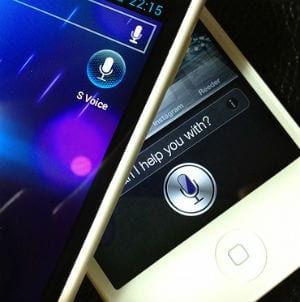 Years ago, talking into electronic devices and having them answer us back seemed like something only a sci-fi movie could concoct. Today, though, thanks in part to mass-market virtual personal assistants like Apple’s Siri, people are getting pretty comfortable talking to their gizmos.
Years ago, talking into electronic devices and having them answer us back seemed like something only a sci-fi movie could concoct. Today, though, thanks in part to mass-market virtual personal assistants like Apple’s Siri, people are getting pretty comfortable talking to their gizmos.
Now Nuance, the company that makes the “Dragon” speech-recognition software, is looking to bring that technology and familiarity to the customer service world. By replacing those annoying phone trees (Press one for English, Press six for bill-pay, etc.) with its new interactive, virtual assistant software — called “Nina” — companies can take advantage of Siri-like functionality to smooth out call-center operations, shorten customer wait-times on the phone, and lower back-end employee costs.
Nina certainly isn’t the first virtual P.A. to hit the call center — several companies have developed their own such programs — but it’s one of the first to be marketed directly to the enterprise. But its appeal is that Nina has an open API, meaning it can be integrated with other, existing CRM programs or Web applications. So companies can pretty easily implement Nina into their customer service operation, and suddenly, instead of waiting in a phone queue for a customer service agent to pick up, or having to navigate a complicated sequence of commands, customers can just explain in more or less normal terms what they’re calling about.
For instance, Nina can do things like pay bills, transfer funds, make a purchase, schedule a reservation, and more. For field service operations, the potential’s even greater: the ability to synch a Nina-esque operator to an automated dispatch service allows customers to call up and easily and quickly schedule a repair or an installation — all without the pain of listening to elevator Muzak for 15 minutes.
Companies with mobile apps can customize Nina to answer any questions or provide whatever tools they please to customers, and they can even choose the voice that represents their version of Nina. So a customer could potentially tell an app, “I need my hot water heater fixed, when can someone come out?” Nina would (theoretically) understand the question, and offer up some dates and times to send a technician out. Or they could say, “I need to pay my bill, how much do I owe?” and Nina could not only tell them the balance, but also make a payment if the customer says to do so.
The customer isn’t the only one who benefits: companies can cut back-end office costs through live agents. And as we’ve written before, investing in improved customer service isn’t just an expense — it’s a potential profit-driver.
Now, this all assumes it works. After all, who hasn’t had a little trouble getting on the same page with Siri from time to time. That could definitely get on a customer’s nerves. So maybe Siri isn’t the best comparison — maybe Nina should be more like Jeopardy’s Watson. The United Services Automobile Association (USAA) will be the first to implement Nina this month, so we’ll have to see how Nina behaves after its pilot program with its first real company.
More: Great, You’ve Got Multi-Channel Support — Now Here’s What You’re Still Doing Wrong.
Click here to download a free whitepaper, “Five Steps to Make Field Service Profitable.”

Share this: